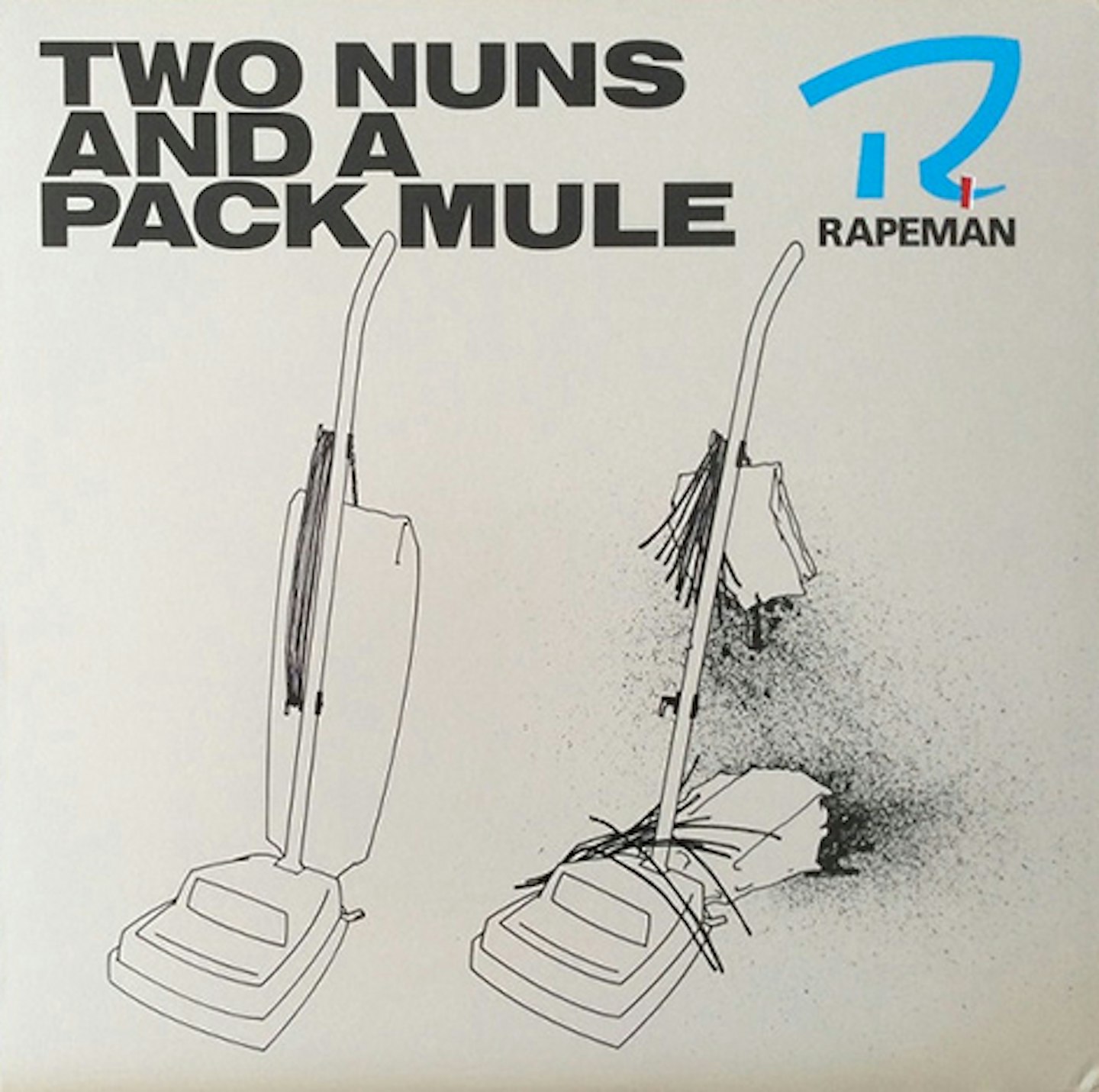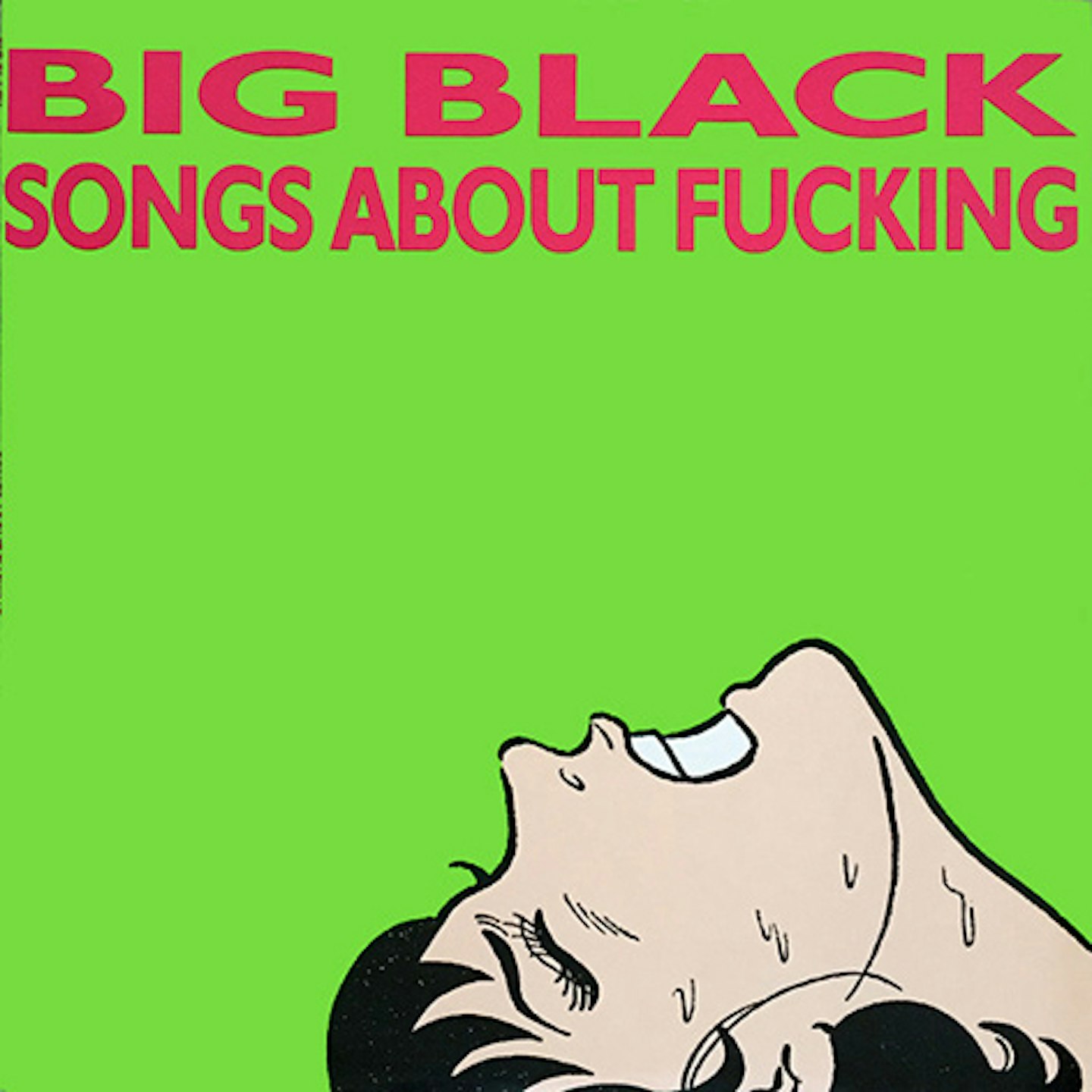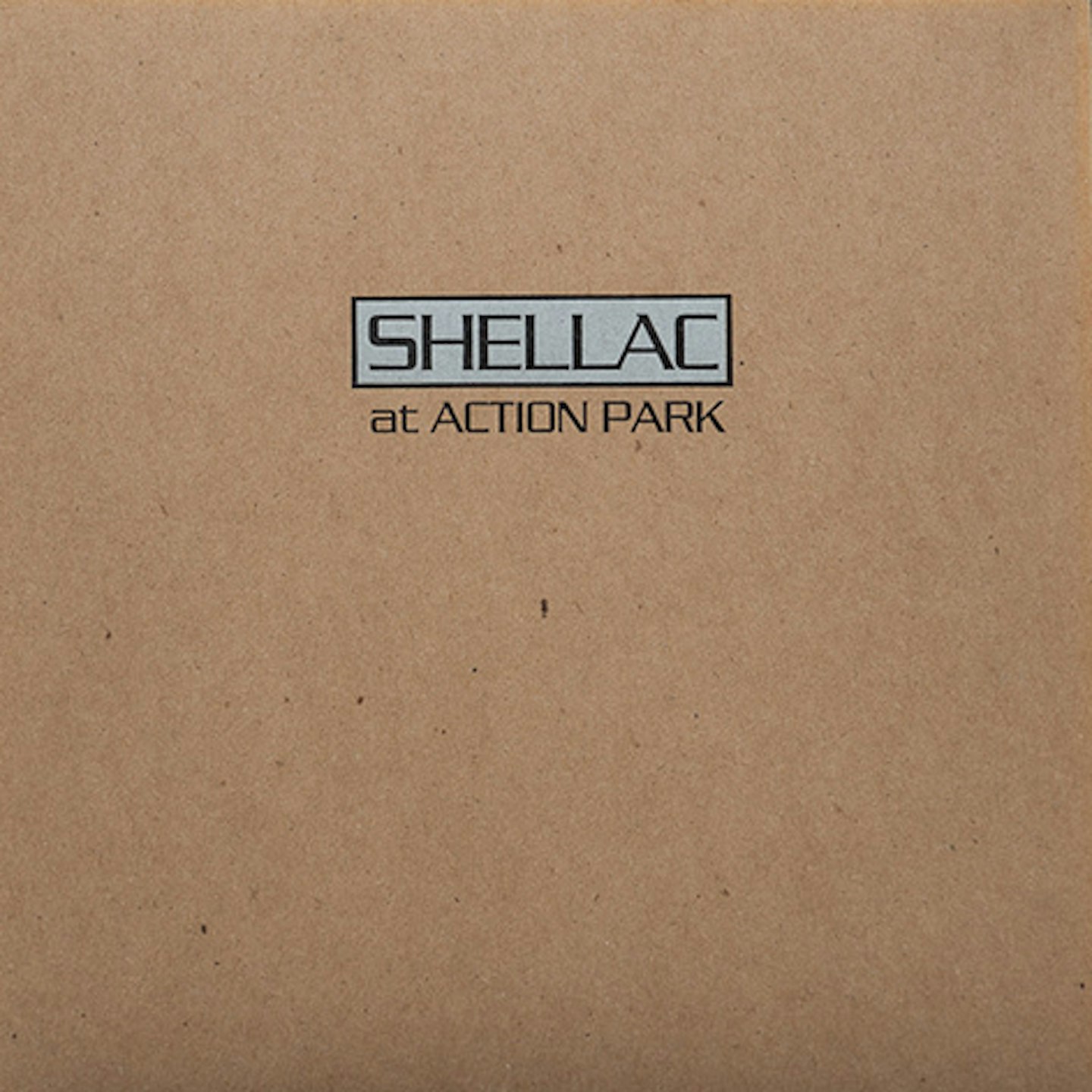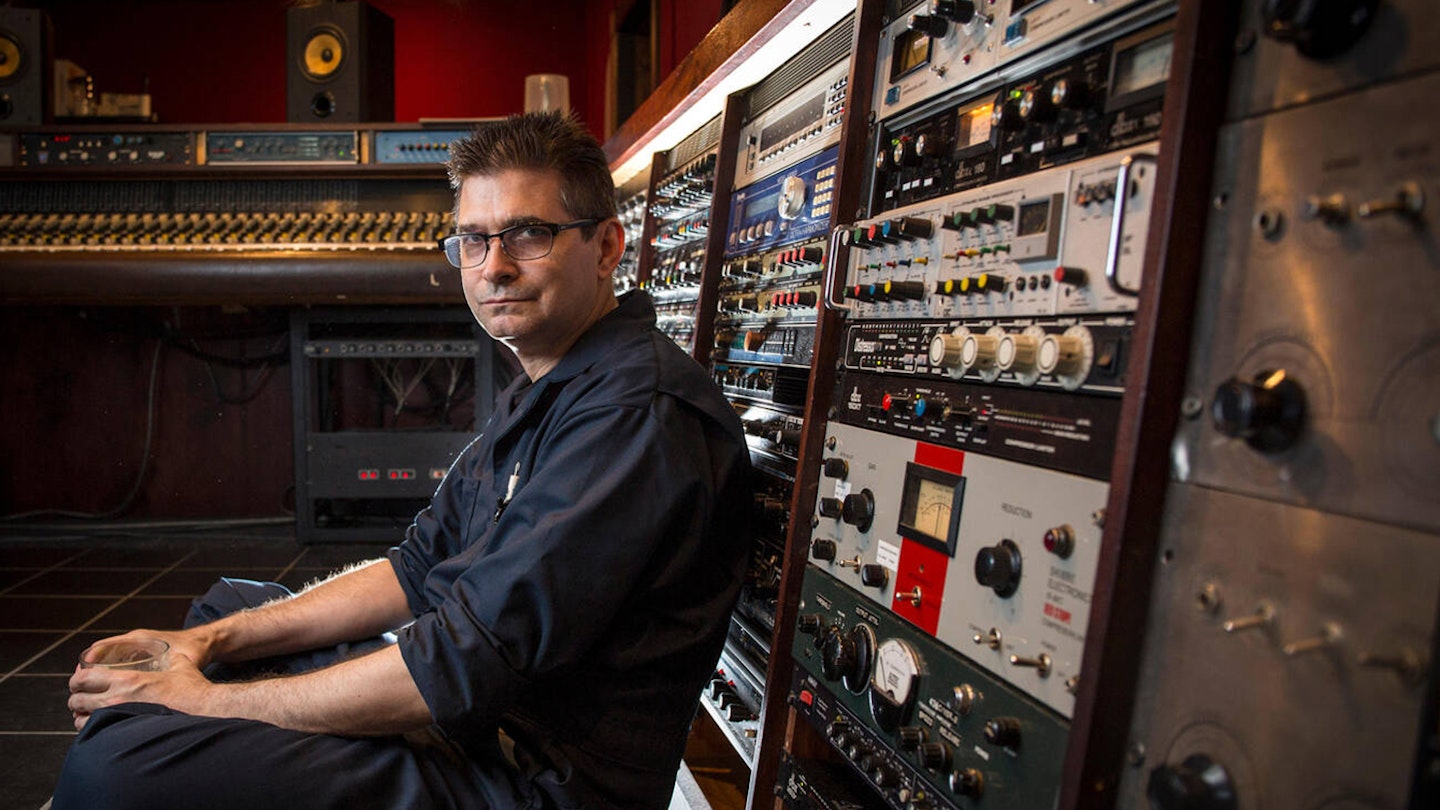“We knew Big Black were going to be making ugly, obscene music,” Steve Albini told Toronto filmmaker Daniel Sarkissian in 2020, “noisy music [with] limited appeal… There was no point in entertaining notions of popularity.” Initially conceived as a one-man project in 1981 in Chicago, Illinois, whilst Steve Albini was a journalism student at Northwestern University, Big Black began as an exercise in iconoclastic misanthropy, inspired by the aggressive electronic minimalism of tuxedomoon and Cabaret Voltaire; out-of-phase cheesewire guitars and militaristic machine rhythms allied to Albini’s in-character lyrics, nightmare reportage from the dark heart of a corrupted America.
-
READ MORE: Inside the recording of Nirvana's In Utero: "I got a drunken phone call from Kurt one night…”
However, as Albini himself insists, the ‘group’ didn’t truly exist until he was joined by guitarist Santiago Durango of Chicago punk band, Naked Raygun, and, later, bassist Dave Riley. The Big Black sound developed around the high, chiming train-yard wail of Durango’s Telecaster guitar - played through a distortion pedal and a Fender Twin amp - the relentless attack of the Roland TR-606 drum machine and Riley’s bass sound, marinaded in the cosmic slop influences of Funkadelic. Albini heightened the high-tensile sound by issuing twin-headed thin-copper guitar picks that hit the strings twice for “a sharp, zinging attack”.
When Big Black folded, they had become popular, their aggressive sound, misanthropic lyrics and the coiled skinny violence of their live performances attracting what Albini called “people [who saw] your music as an expression of their ugliness and hatred.”
Rather than mitigate against that response, Albini doubled down. His next group, formed with Scratch Acid rhythm section David Sims and Rey Washam, were named Rapeman, after a Japanese superhero manga comic. It was, Albini now admits publicly now, an inexcusable act of provocation. Perhaps appropriately, that group split due to incompatible inter-band tensions and Albini formed the group he’s been associated with for the past years, Shellac.
Recorded during downtime from his full-time job as a recording engineer at his Electrical Audio studio complex in Chicago, Shellac are a hobby, a commitment, an ongoing experiment in the power of analogue recording and what Albini has called “a 100-year commitment”. Shellac have recorded just five official studio LPs in 30 years, yet each one is worthy of ownership and comment. What we’ve tried to do here is place them in the context of his entire career in a way that hopefully makes artistic sense, and, in the process, single out what makes Albini such a continually thrilling and iconoclastic music maker.
10.
Shellac
Excellent Italian Greyhound
Touch And Go 2007

Shellac’s fourth release (seven years after 1000 Hurts) ranks as the group’s most experimental and arch and finds the trio in what Albini calls “light-hearted” mode. It repurposes The End Of Radio as an even more sparse and desperate cry for help (“there is no special girl!”), repeatedly stops and starts in its quest for purpose, quotes from Fugazi’s final LP, The Argument, and in Genuine Lulabelle features a nine-minute nightmare, Child Ballad interspersed by exploratory guitar and drum hammering, and the voice of Word Jazz poet Ken Nordine. It’s not the place for the uninitiated to start but once you’re deep into Shellac’s world, it’s great to hear them fuck things up like this.
9.
Big Black
The Hammer Party
Homestead/Touch And Go CD

This protean Big Black primer includes 1982’s solo Albini EP, Lungs, plus 1983 Bulldozer EP with Naked Raygun’s Jeff Pezzati on bass and Pat Byrne assisting the Roland TR-606, plus 1984’s Race-X EP in which Byrne is ousted. The Lungs home-recordings are aggressive, distorted, mechanical but also very funny (“I’m a bricklayer/I kill what I eat!”). Thanks to Byrne’s drums, and the lack of distortion on Albini’s vocals, Bulldozer sounds echoing, chilly, hopeless. On Racer X the use of the Roland is minimal, ruthless, perfectly suited to Albini’s tales of hired killers, speed-addicted delivery drivers, and weasel barroom cowards.
8.
Shellac
The End Of Radio
Touch And Go 2019

Culled from the band’s two BBC Peel Sessions, recorded a decade apart in 1994 and 2004, this is a document of band evolution. Straight from the opening cry of “Radio 1, play the drums!”, their debut session, recorded just prior to cutting At Action Park, is an absolute joy, the sound of Shellac as a (relatively) loose heavy rock trio. The 2004 session, a precursor to 2007’s Excellent Italian Greyhound, recorded live shortly after Peel’s unexpected death, is loose, improvised and continuously startling. It also features Shellac masterpiece The End of Radio, in its finest form, a valedictory postmodern, sometimes comic farewell to broadcast radio repurposed as a salute to Peel himself.
7.
Shellac
Terraform
Touch And Go, 1998

Their most underrated work, thanks, in part, to the divisive opening track, the eerily hypnotic 12-minute mantra of space, sound rhythm that is Didn’t We Deserve A Look At The Way You Really Are. Checkout after that track and you miss what’s arguably Shellac’s finest-sounding record. Recorded at Abbey Road, utilising their vintage collection of microphones, it’s a warm, crunchy, aggressive collection of wry disquisitions, from the prowling, self-explanatory House Of Garbage to a wry tribute to Canada (“Imagine a country so blue/Backwards it's “adanaC") and Copper, Albini’s Ken Nordine-esque metallurgic paean to a “decent” material that “will never be gold”.
6.
Shellac
Dude, Incredible
Touch And Go, 2014

Seven years on from the contrary and occasionally indulgent Excellent Italian Greyhound Shellac returned in lean and healthy form with this thirty-minutes of precise, controlled and surprisingly warm-sounding withhold-and-release strafe-attacks. With its songs about dangerous group dynamics (Dude Incredible, Riding Bikes) and Founding Fathers (All the Surveyors, Mayor/Surveyor, Surveyor) there may also be a conceptual coherence to Dude, Incredible operating just below the surface, something to do with American ownership and collective violence, but the integrity is there in the music, even if it’s hidden in the words.
5.
Rapeman
Two Nuns And A Pack Mule
Touch & Go, 1988

The temptation is to rank this album lower, simply because of that conceptually reprehensible band name [see intro] but whilst this might justifiably be the most overlooked Albini-related release it’s also one of the strongest, and strangest. At first, it’s hard to find a location within the group’s alien sound. Albini’s distorted vocals seem too buried in the mix, the guitars too sharp to the point of piercing, while Sims and Washam’s bass and drums strike like blunt instruments. The band split due to tensions between Sims and Washam and Albini’s own hubris. That stress, agitation, arrogance and power-play is all part of the Rapeman sound.
4.
Shellac
1000 Hurts
Tough And Go, 2000

Lyrically, with the misanthropic Prayer To God (“Him - just fucking kill him, I don't care if it hurts”) and anti-JFK rant Canaveral (“Stick his cock in my wife/ What on Earth could make him stoop so low?”) 1000 Hurts seemingly moved away from the notebook abstractions of At Action Park to something more akin to Big Black’s jaundiced world view. Yet, while Albini himself believes “we somehow [got] into a nasty cul-de-sac on some of those songs”, the results are more interior and wry than previously, helped by an astonishingly clear yet complex band sound that suggests a supercharged Meat Puppets; the Trainer and Weston engine room investing everything with a taut yet exhilarating brute power.
3.
Big Black
Songs About Fucking
Touch And Go, 1987

Released amidst The PMRC’s attempts to police explicit music releases, Songs About Fucking is Big Black’s purposefully incendiary farewell. The reductio ad absurdum title also applies to the album’s sound, which took the Atomizer template and re-presented it as the blackest of self-parodies, showcasing the group at their absolute peak and in their final throes. The LP’s first side, (‘Happy Otter’ aka a Japanese manga term for an erect penis), road-tested live, is short, brutal, unassailable. The second side (Sad Otter = flaccid penis) features astonishing highs (Ergot, Fish Fry) but was, the band later admitted, a forced exercise in finding the Big Black voice. “I was just tapped out,” Santiago Durango said, “We realised there were [only] a finite number of ideas we could explore as Big Black.”
2.
Big Black
The Rich Man's Eight Track Tape
Touch And Go, 2015

The 2015 remaster, not the brittle-sounding original. A compilation of their 1986 debut LP, Atomizer, plus the Headache EP and the Heartbeat 7” from the following year. It still sounds like nothing else. Kerosene, My Disco, and Jordan, Minnesota soundtrack the horrors and desperations of small-town American life (paedophilia, self-immolation, infanticide) with pummelling, raw, brutalising, metal-on-metal noise. While tracks such as Big Money, Things To Do Today and Pete, King Of All Detectives placed us in Albini’s nightmare noir landscape of hired killers, deadbeat gumshoes and corrupt cops. A complete, terrifying world fully realised.
1.
Shellac
At Action Park
Touch And Go, 1994

As statement of intent, the debut LP from Steve Albini, bassist Bob Weston, and drummer Todd Trainer takes some beating. Right from the opening track, the elastic crunch and grind of My Black Ass, here was a sound both familiar and unknown, the power trio model refitted with tungsten exo-skeleton, moving with unnerving, unreadable polyrhythmic precision. It is the sound of machines performing some horrible, never-to-be-defined action with relentless purpose. Albini’s lyrics, are abstract, overheard noir narratives plucked the edge of reason. Allied to his jagged sawtooth guitar, Weston’s dread-purpose elastic bass and Trainer’s hieroglyphic drum patterns they combine to suggest something vast, cinematic, brilliant yet unknowable.
Photo: Alamy
